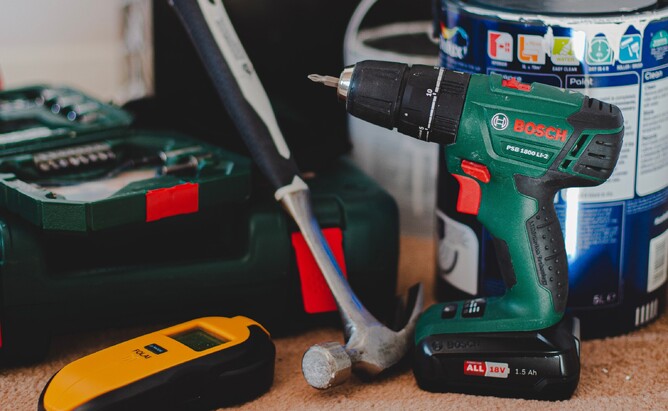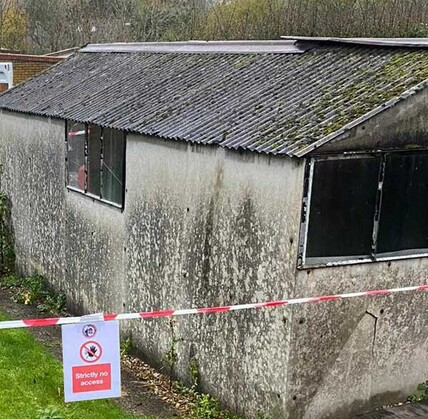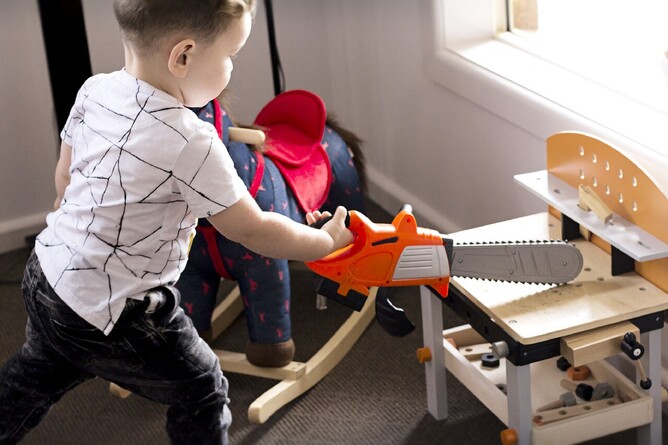Updated 13 September 2022.
Obviously if work is required that involves disturbing an Asbestos Containing Material (ACM), it makes sense to use a Health & Safety Executive (HSE) licensed Asbestos contractor but... do you have to?
Is the product a licensed ACM?
If the product is a licensed ACM and notifiable to the HSE then this is a hard yes. It is a legal requirement to appoint an HSE licensed contractor.
There are exceptions...
Now much as appointing a licensed contractor is the most sensible thing to do, there are some ACMs that can be an exception to this, as they are not considered notifiable and are classed as non-licensed products. This does not mean that you can just go at it hammer and tongs though, so please always do your research before attempting any work on a pre-2000 building.
Better still, contact us. As Asbestos specialists we can give you advice on your next steps.
There is evidence of Asbestos dating back to 2400 BC, but it took until 1918 for it to be recognised as a risk. Despite this, ACMs continued to be used extensively in buildings until 1985, with a total ban not coming into place in the UK until November 1999. Essentially any work taking place - even refurbishment work to an older building during that time - has the potential for ACMs to be in situ.
Be responsible - prevent the risk.
To ensure that you understand and mitigate the risk, any contractors carrying out work must have a pre-refurb asbestos survey carried out. If you are doing DIY work, this is not a legal requirement, but you’d be pretty irresponsible not to have one. I mean, who would want to put themselves, their family, friends etc. at risk of being contaminated and developing a life-threatening asbestos related illness?
To make sure that you fully understand what is required to keep you safe, you should make sure that any work that involves disturbing ACMs, without the use of a licensed contractor, has an HSE task sheet. The Asbestos Essentials section on the HSE website, gives clear guidance on what you can and can’t do.
For example, removing Asbestos containing cement sheets from a domestic shed or garage roof can be carried out without the need for a licensed contractor. You need to read the relevant equipment and method sheets (EM at the top of the page) and the job specific task sheet A14 – removing asbestos cement sheets. This is a short instruction sheet for this specific non-licensed task.
Following reading the relevant task sheets, you then need to ask yourself “Am I comfortable that I, or my chosen contractor is competent to do this work?”. Please don’t proceed if the answer is no. Get help from someone who is competent.
Disposing of hazardous waste
Before starting work, you need to establish how you are going to dispose of the hazardous waste you will generate. In Medway, it is possible for a private householder to take this waste to one of 3 tips in the area and it is currently still fully subsidised by the Council.
This hugely reduces the potential for fly-tipping, so yay Medway Council 😊
You'll need to book an appointment to visit the Capstone, Cuxton and Hoath Way sites. Follow the link to book online and ensure that you have your booking reference ready to show to the security guard when you reach the site.
This is not the case for other areas and it is possible that none of the CA sites will accept domestic hazardous waste, or there is a charge.
To be clear, it is not possible for a contractor to dispose of waste in this way, as the minute you pay for it to be taken away, it becomes commercial waste and must be disposed of at a commercial waste transfer station. You can have the structure dismantled and double wrapped by the contractor, for you, the householder, to take to the tip for disposal though.
An example - roof sheets to dispose of
So, using roof sheets as an example, you have 4 options:
- Remove the sheets following the appropriate task sheets, double wrap in accordance with EM9 – Disposal of asbestos waste, and take to your local CA tip.
Estimated cost is free plus the cost of the polythene, tape etc. required for the job.
Don’t buy cheap. - Remove the sheets following the appropriate task sheets, double wrap in accordance with EM9 – Disposal of asbestos waste, and stack ready for a waste collection service.
Estimated cost is £385.00 + VAT for the collection, plus the cost of the polythene, tape etc. required for the job. - Appoint a competent/licensed contractor to remove the sheets, double wrap and neatly stack them for you to take to the CA tip.
Estimated cost is £550 + VAT. - Appoint a competent/licensed contractor to remove the sheets, double wrap and take them for disposal at a commercial tip.
Estimated cost is £850 + VAT.
Get a licensed contractor to remove AIB
Having said all of the above, I don’t agree with the section on Asbestos Insulation Board (AIB) in the Asbestos Essentials section of the HSE website. AIB is a licensed material in most cases. The repercussions of getting this wrong are far higher than the other products and it is simply not worth the risk.
Whilst I accept that some of the guidance is useful for a trained, competent, experienced maintenance contractor, drilling holes in AIB or removing a nailed AIB board is particularly risky and really should be a licensed job. The potential for fibre release from broken AIB is phenomenal and scares me silly, so please don’t do it and appoint a license holder for the work.
To help clarify the risk, please see page 2 of Asbestos: The Facts, showing 20,000 Asbestos fibres on a penny, next to 2 grains of rice.
Scary huh!*?
Disturbed AIB boarding tears, releasing far more fibres than disturbed asbestos cement sheets would.
Of course, you don’t have to remove ACMs. If they are in good condition and are not in an environment where they risk being damaged, they can be maintained and monitored. Essentially an “aint broke, don’t fix it” scenario.
However, on the flip side of that, an AIB board in a location that a toddler can repeatedly bash toys into, is not a safe environment for this to be left and managed. Our recommendation in this instance would be removal.
And in case you're interested...
In June 2019, after 30 years, we sold our HSE licensed company, which has helped us achieve a better work/life balance. As specialists based in Kent, our experience is invaluable when planning work and our advice will always be what is best for your particular circumstances.
For information on why it was time to sell, please follow this link, 'Asbestos management - is there a conflict of interest?'.
This blog has explained why, when a product is a licensed ACM and notifiable to the HSE, it is a legal requirement to appoint an HSE licensed contractor. It also covers when it is not necessary to do so - when the product is not considered notifiable and is classed as a non-licensed product.
If you’re thinking you may need some help and guidance, don't hesitate to get in touch via our Enquiry form or call us on 01634 232221 and let us help you keep everyone safe.
Asbestos regulations are complex, but with our help, managing it isn’t complicated!






